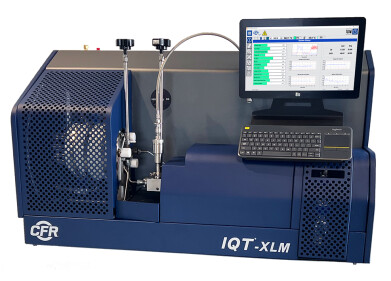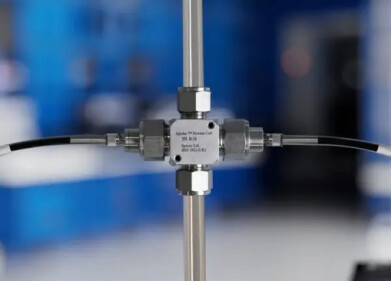Analytical Instrumentation
Benchtop total reflection X-ray Fluorescence (TXRF) spectrometer
May 17 2017
NANOHUNTER II TXRF analyser
Rigaku, a leading analytical X-ray instrumentation company, supplies the petroleum industry with elemental analysers. The next generation Rigaku NANOHUNTER II benchtop total reflection X-ray fluorescence (TXRF) spectrometer enables high-sensitivity ultra-trace elemental analysis, in liquids or on solid surfaces, to the parts-per-billion (ppb) level. TXRF spectroscopy is a method by which an incident beam of X-rays just grazes the sample, delivering low-background noise, high-sensitivity measurement of ultra-trace elements.
TXRF for trace element environmental analyses
Due to increasingly stringent environmental regulations, there is rising demand for a simpler method of conducting analyses down to the ppb level with regard to factory waste liquids and effluent streams. Using the NANOHUNTER™ II spectrometer, analysis down to the ppb level becomes possible, even with a very small sample size, merely by adding a drop of liquid to the sample carrier, drying it, and then performing the measurement. Quantitative analyses using internal standard substances can also be easily performed.
The NANOHUNTER II TXRF analyser combines a fully automatic optical axis adjustment system that provides stable high-sensitivity analysis in an easily handled benchtop form factor that allows quick and trouble-free operation. With a high-power 600 W X-ray source, a newly developed mirror (optic) and a large-area silicon drift detector (SDD), the NANOHUNTER II spectrometer enables high-intensity, high-sensitivity measurements. The lower limit of Cd detection is 2 ppb, for example. For As and Se in a liquid, a detection lower limit of 0.8 ppb or less has been achieved.
One important advantage of the NANOHUNTER II spectrometer is the high efficiency with which Kα lines can be excited. Until now, exciting Kα lines in certain elements has been very challenging, so practitioners relied on analysis using L-lines, which are difficult to measure. The newly developed optic employed in this device can be used with a high-power excitation source of about 30 keV, which makes it possible to measure Kα lines with high signal-to-noise ratios and clearly defined peaks. Wide adoption of this capability is expected in fields such as the screening and analysis of factory waste liquids.
In the area of analysis of solid surfaces, there is demand for analyses that penetrate slightly deeper than the surface. For this kinds of analyses, a methodology called grazing incidence X-ray fluorescence (GI-XRF) is employed whereby the elements beneath the surface are excited by varying the incident angle of the X-ray source. Because the NANOHUNTER II TXRF spectrometer has variable angle of incidence, it is possible to perform depth profile surface analyses. The GI-XRF technique is applicable to nanoscale research.
Unique Capabilities
â— Detection of a wide range of elements - Can detect elements from Al (aluminum, atomic no. 13) to U (uranium, atomic no. 92).
â— Measures extremely small samples - With liquid samples, 10 μL – 50 μL is an adequate quantity, one to two orders of magnitude less than the amount required for common chemical analysis methods. This can easily meet the requirements for forensic investigation, where it is desirable that non-destructive methods be used to analyse trace amounts of evidence.
â— Automatic measurement - By using a 16-sample changer mechanism, automatic operation (for example, overnight operation) becomes possible.
â— No special requirements for device installation - Runs on 100 V AC power and does not require gas for analysis.
Request a brochure today.
Digital Edition
PIN 25.5 Oct/Nov 2024
November 2024
Analytical Instrumentation - Picturing Viscosity – How Can a Viscometer or a Rheometer Benefit You? - Sustainable Grease Formulations: Evaluating Key Performance Parameters and Testing Method...
View all digital editions
Events
Dec 03 2024 Dusseldorf, Germany
Dec 08 2024 Anaheim, CA, USA
Turkey & Black Sea Oil and Gas
Dec 11 2024 Istanbul, Turkey
Dec 19 2024 Aurangabad, India
Jan 20 2025 San Diego, CA, USA



















